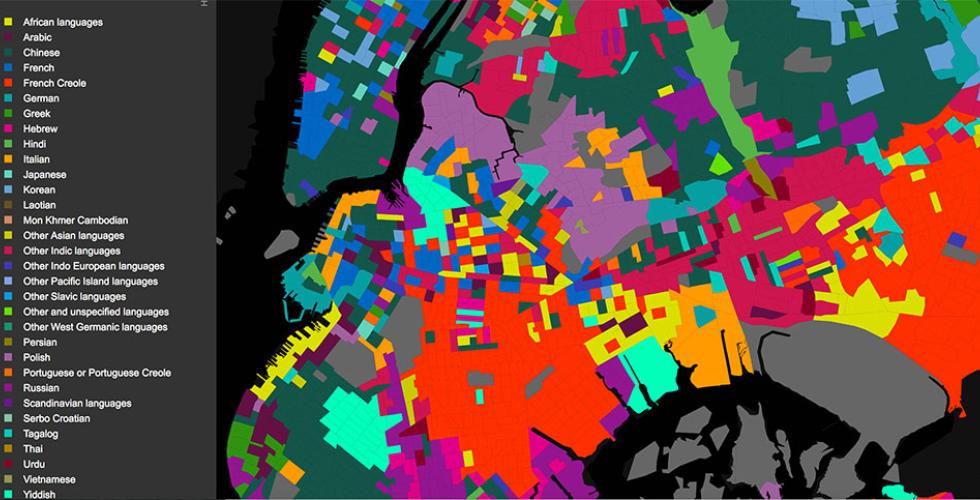Conflict Urbanism: Language Justice
This spring, the seminar will focus on the role of language as a structuring principle of cities, highlighting the ways that urban spaces and the world are physically shaped by linguistic diversity, and examining the results of languages coming into contact and conflict. For this work we will use New York City as our laboratory. The New York City metropolitan area is the most linguistically dense city in the world, hosting an estimated 700 different languages.
To better understand this diversity, we will look closely at micro-neighborhoods such as Little Senegal (Manhattan), Little Korea (Queens), and Little Ramallah (Paterson, New Jersey). In thinking about the transnational and translingual nature of the city, we will consider structures from digital technology to remittances (small amounts of money sent “home”) and their role in language preservation and language extinction. Finally, through visualizing and mapping how language is situated in these micro-neighborhoods, we will begin to explore the cultures, languages, informal structures and architectures that migrants bring to the city.
Our work will be, by necessity, multidisciplinary across history, architecture, politics, law, literature and linguistics as related to the topic of Conflict Urbanism. Our work will also be multi-media. Students will create a web-based map as well as written reflections, incorporating analogue as well as digital media. No previous technical skills are necessary, and professors will set individual guidelines for each student based on their disciplinary expertise.
Conflict Urbanism, Environmental Justice, Linguistic Human Rights, Transnationalism, Multilingual spaces and borders, Urban language politics
Carto, QGIS, MapBox, Data types, creation, and cleaning


